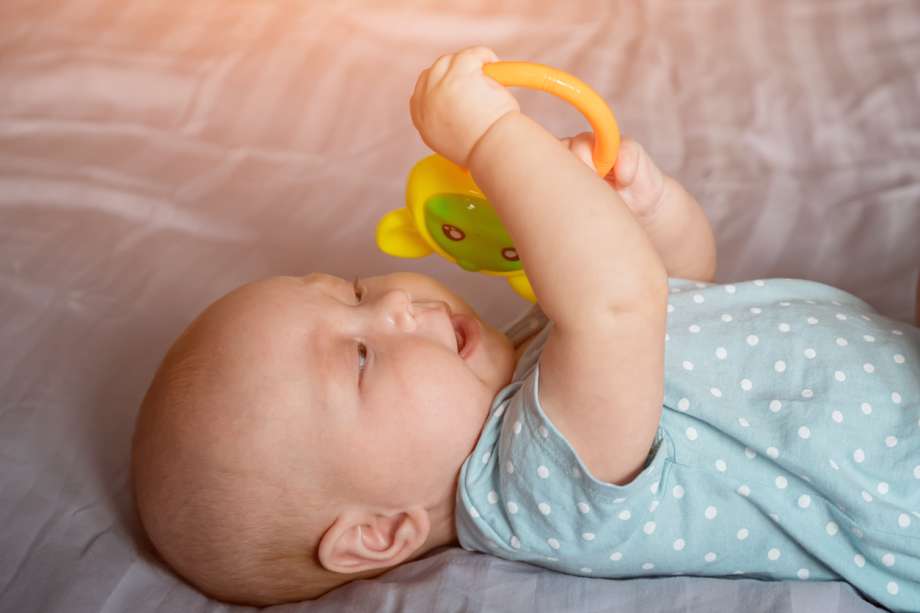Shaken Baby Syndrome - Causes, Consequences and Prevention

When a new baby arrives, families can experience a mix of emotions and may begin to feel overwhelmed when they aren’t sure how to calm or soothe a fussy baby.
When new parents or other caregivers feel extreme fatigue or anger, caring for their baby’s needs, they are at higher risk for causing a type of injury known as Shaken Baby Syndrome (SBS).
Constant crying, late-night feedings, and extreme amounts of stress or exhaustion may trigger a parent or caregiver to violently take out their frustrations on the baby by shaking them too hard that it causes severe injuries – or even death
Shaken Baby Syndrome, also called Abusive Head Trauma, is a serious crime and form of child abuse. It’s important to understand the risks that most commonly lead to a case of SBS. If you or a loved one are feeling overwhelmed, please review the resources below and seek help to prevent any potential abuse.
What is Shaken Baby Syndrome?
The MayoClinic defines Shaken Baby Syndrome (SBS) as a serious brain injury resulting from forcefully shaking an infant or toddler. This type of injury occurs when the baby is shaken so hard that the brain cells are damaged and don’t get enough oxygen. The fragile blood vessels in or around the brain can also be damaged, which can cause bleeding and increase the pressure inside the head.
You may also see Shaken Baby Syndrome referred to as Abusive Head Trauma, Shaken Impact Syndrome, inflicted head injury or whiplash shaken infant syndrome. It is one of the most dangerous forms of child abuse. Nearly one-fourth of babies who have Shaken Baby Syndrome will die.
Symptoms of Shaken Baby Syndrome
While Shaken Baby Syndrome occurs from an injury in the brain, there are several physical and developmental symptoms to look for.
After this type of injury, the baby may have symptoms such as:
- Unsual fussiness or crying with an inability to be consoled
- Irritability
- Changes in sleeping pattern
- Difficulty nursing or eating
- Problems breathing
- Changes in skin color
In severe cases a baby Shaken Baby Syndrome may result in
- Vomitting
- Inability to wake the baby
- Bleeding in the eyes
- Seizures
- Death
In more extreme cases of Shaken Baby Syndrome babies will often suffer permanent health problems, such as blindness, seizures, developmental delays or cerebral palsy.
How Does a Baby Get Shaken Baby Syndrome?

While most people would find it incomprehensible to purposely cause an injury to a baby, Shaken Baby Syndrome is most commonly caused by one of the baby’s parents or by a close caregiver, such as a family member or a babysitter.
One of the main risk factors for Shaken Baby Syndrome is a parent or caregiver who is tired and frustrated by the baby crying. When the parent or caregiver becomes overwhelmed, they may shake the baby out of frustration. Conditions like postpartum depression can heighten these feelings of extreme frustration or desperation.
Shaken Baby Syndrome occurs when the baby is shaken hard enough to cause damage inside the brain. Most cases of Shaken Baby Syndrome occur in babies who are younger than six months of age. Because babies have weak neck muscles, they cannot fully support the weight of their heads. When the baby is shaken, the neck muscles are not able to stabilize the head, and the brain can bounce back and forth inside the skull.
Sometimes when a baby is shaken, they may also hit their head on something, which can also increase the risk of a brain injury or a skull fracture. When this type of violent shaking occurs, it can also damage the spinal cord.
How Long Does a Baby Have to Be Shaken to Get Shaken Baby Syndrome?
No amount of shaking is safe for a baby. Shaken baby syndrome can occur from as little as five seconds of shaking. When holding your baby, avoid quick jerking movements, rough jostling or any attempt to throw or toss the infant.
Can Shaken Baby Syndrome happen accidentally?
Parents worried about accidentally causing Shaken Baby Syndrome, rest assured that normal interactions and play such as lifting your baby in the air or bouncing your baby on your knee will not cause Shaken Baby Syndrome.
Make sure to keep your baby’s head and neck properly supported, keep control over your baby while holding them and avoid rough or jarring movements.
Can Shaken Baby Syndrome Be Treated or Cured?
There are currently no available treatment options to cure Shaken Baby Syndrome. About one-fourth of babies who suffer from Shaken Baby Syndrome will die, and about 80% of the babies who survive will have permanent brain damage.
Initial treatment may include efforts to stabilize the baby’s health, including imaging of the baby’s brain with Magnetic Resonance Imaging (MRI) or Computed Tomography (CT) scans and X-rays.
Additionally, surgery or medicine may be an option to help treat swelling in the baby’s brain and reduce the severity of symptoms. Later treatment options may include physical therapy, occupational therapy, and speech therapy. Babies who have been injured should be regularly seen by a clinic that specializes in helping care for babies with SBS or other infant head trauma.
Preventing Shaken Baby Syndrome
Shaken Baby Syndrome is preventable. It’s essential parents and caregivers receive the proper resources and education into this condition to identify any potential risks and concerns they may have.
Establishing healthy stress management strategies and ways to cope with strong emotions are essential when preparing for a baby. If possible, establish a support system of close friends, family members and caregivers that can help you in the case of new parent burnout or intervene if they sense your or your child may be in danger.
Managing Stress and Frustration Toward a Crying Baby
If your baby is crying and you are becoming frustrated, there are actions that you can take to help you cope. Never shake a baby, even if you think you are being gentle. Here are some ideas you can try instead:
- Count to ten and take a few deep breaths
- Set the baby down in a safe place and walk away for a few moments
- Call a friend or family member and ask for help
- Call your baby’s healthcare provider if the baby seems to be crying for no reason
- Contact a local parenting resource center, or look for an online support group
- Call a national hotline, such as the 24-hour crying baby helpline at 866-243-2229 (BABY)